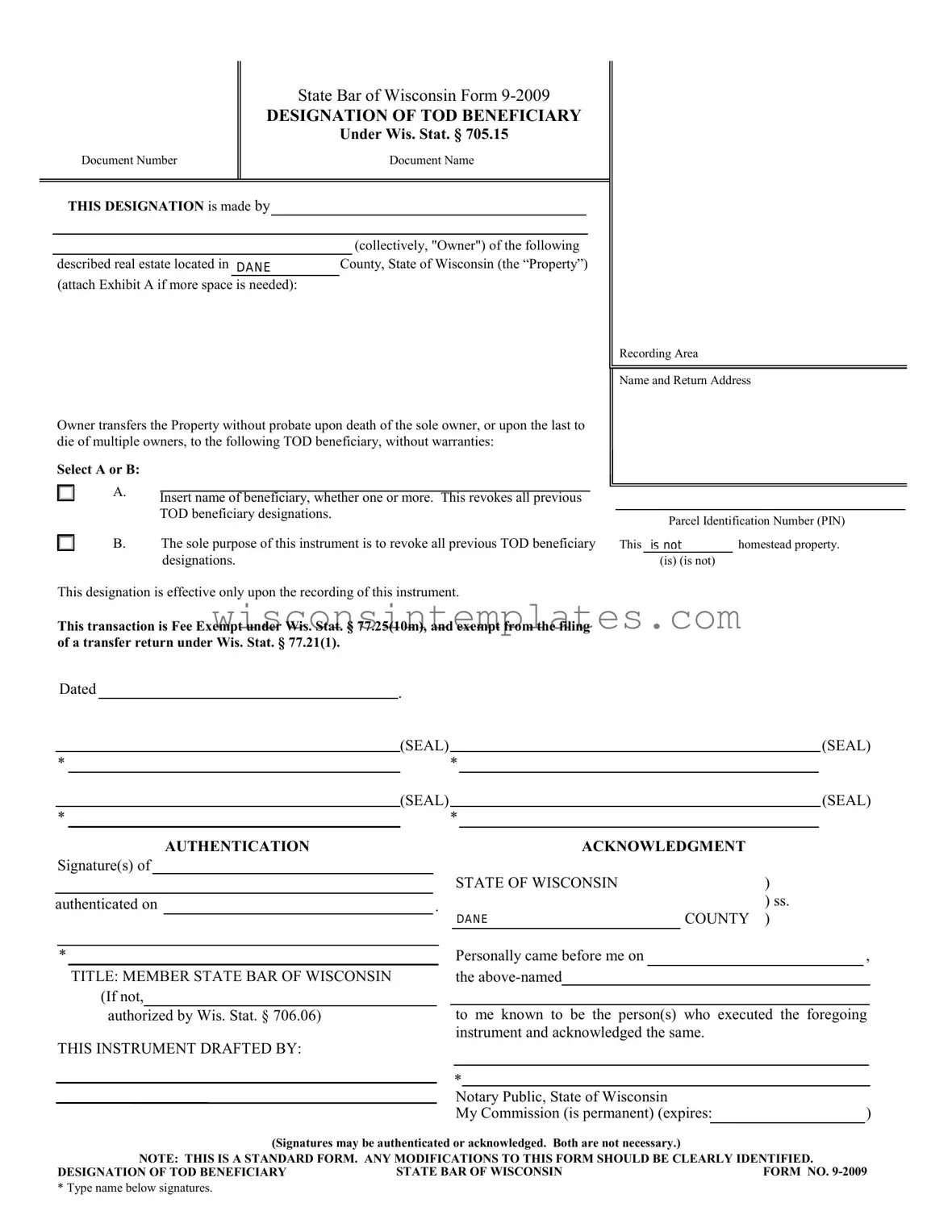The Wisconsin 9 form, officially known as the Designation of Transfer on Death (TOD) Beneficiary, serves a vital purpose for property owners in Wisconsin. This form allows individuals to transfer real estate to designated beneficiaries without the need for probate upon their death. It is particularly significant for those who wish to ensure that their property is passed on smoothly and efficiently to their chosen heirs. The form requires the owner to specify the property in question and to name one or more beneficiaries. Importantly, any previous TOD beneficiary designations are automatically revoked when this new designation is made. The process is designed to be straightforward, as it becomes effective only upon recording with the appropriate authorities. Additionally, the transaction is fee-exempt under specific Wisconsin statutes, which can ease the financial burden on the owner. This form also includes sections for authentication and acknowledgment by a notary public, ensuring that the designation is legally binding. Overall, the Wisconsin 9 form is a practical tool for estate planning, allowing individuals to make their wishes clear while simplifying the transfer process for their loved ones.
